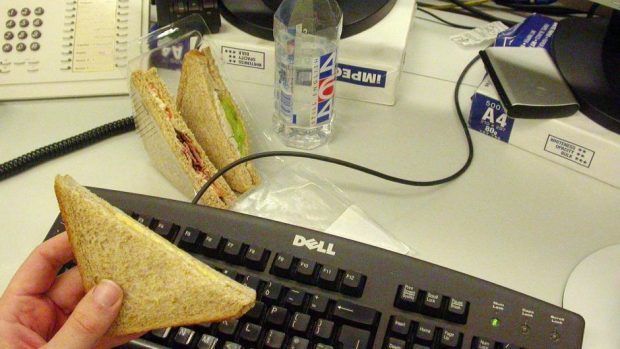Not having lunch at your desk and switching off the TV while eating could be the key to losing weight – according to scientists.
A new study on the effects of mindful eating – which includes concentrating on each mouthful – found that those who ate this way lost far more weight than other slimmers.
Experts from the University of North Carolina analysed data from 80 people who said they were ready to lose weight at the start of the study.
They were split into two groups, with the first encouraged to follow mindful eating, such as paying attention to hunger and feelings of fullness, planning meals and snacks, savouring tastes and keeping away from distractions. They followed this plan for 15 weeks and were encouraged to exercise.
The second group, meanwhile, was given no intervention and acted as a control group.
Neither group was told to count calories or follow a restricted diet.
The results showed that, after 15 weeks, those in the mindful group had lost 1.9kg (4lb) compared with 0.3kg (0.6lb) for participants in the control group.
Dr Carolyn Dunn, from North Carolina State University, who worked on the study, said: “Mindfulness is paying attention to your surroundings, being in the present moment.
“Mindful eating is eating with purpose, eating on purpose, eating with awareness, eating without distraction, when eating only eating, not watching television or playing computer games or having any other distractions, and not eating at our desks.”
She said the study results showed that “people did increase their mindfulness and they did absolutely decrease their weight”.
Professor Hermann Toplak, president of European Society of Obesity, encouraged people to reduce their stress levels before eating.
He said: “You have to reduce your stress levels before – walk or do something restful – then you will eat differently.
“If you are eating out from your stress and that’s very frequent today – especially in cities like London where people are so busy – then you eat quicker, fatter and sweeter.
“And if you reduce stress levels you will eat salad, you will eat vegetables, because you are in the mood to eat things like that also.”
